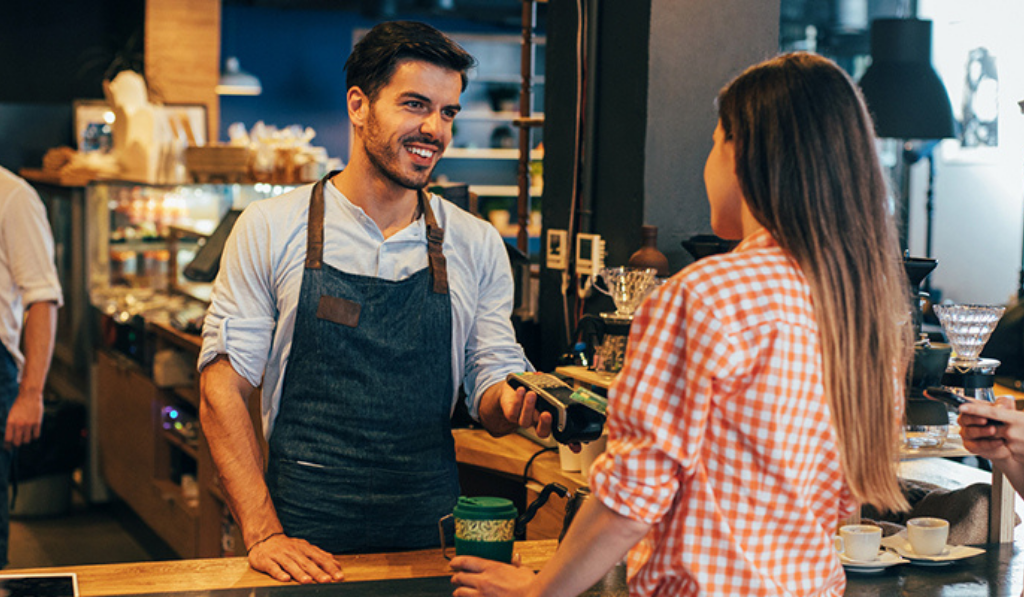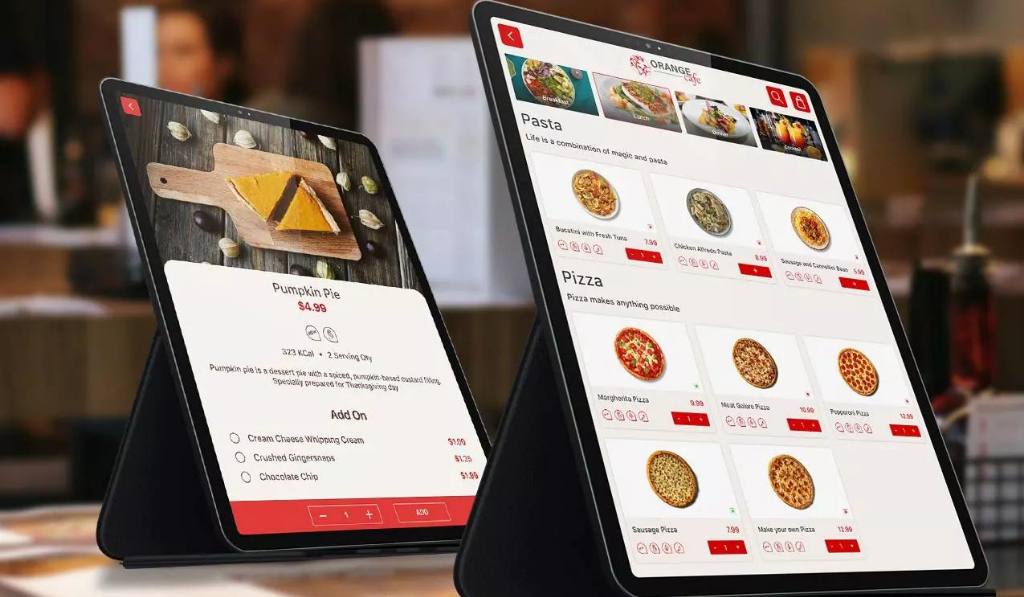Service Interactions in the New Light of Hospitality

“What guests really remember about a hotel is not service (the task that is expected) but it [is] the hospitality that is exhibited.” – Montgomery, 2016
By Lu Lu, Ph.D., Assistant Professor, Temple University
Service Interactions – Why Does it Matter?
The hospitality industry thrives on producing exceptional customer service. Different from other businesses, hospitality exhibits itself through interactions. Interactions can take place in various forms, including verbal communication, eye contact, facial expressions, appearance, and body language. Customers are often directly involved in or observe interactions throughout the service delivery system such as making reservations, onsite consumption, social posting/sharing, and participating in the company’s loyalty promotions. As technology-mediated services have become prevalent, virtual and digital interfaces are critical encounters for businesses to interact with customers.
Managing guest interactions has been a delicate interaction where hospitality businesses can either win or lose a customer. The past decade has witnessed transformative changes in the industry such as the growing competition for customers, entrance of new competitions (e.g., sharing economy services), hyperconnected virtual platforms (e.g., social media sites and user-generated content), and the rise of new service actors (e.g., self-service technologies and artificial intelligence). The onset of the Covid-19 global pandemic, in particular, has changed how we look at service interactions. With the explosion of new touchpoints and digital encounters throughout the guest journey, are businesses getting ready to serve customers while having their best interests in mind? How can hospitality interactions help managers to develop informed strategies to influence guests’ perceptions and behavior? This article attempts to shed light on the power of service interactions by drawing on new evidence from scientific research to help businesses leverage these interactions for greater success.
Besides the Known, What’s New?
Signaling brand success
We often consider service interactions as direct communication between a customer and employees. However, indirect interactions such as observing employees and other customers are significant information sources for customers to gain knowledge about the business. Companies are well-versed in training employees to observe cues and interact with guests. However, guests’ observations of employees and other customers are equally important to formulate brand evaluations which influence guest behavior. Garmaroudi, King, and Lu (2021), in their recent research, discovered that when observed interactions between service actors (e.g., customer-to-employee interactions, employee-to-employee interactions, and customer-to-customer interactions) embody the brand image, guests can easily understand the brand notion and develop more favorable brand perceptions. They test the theory in the context of luxury hotels and restaurants as well as select-service hotels. More interestingly, observing brand-aligned interactions from employees can mitigate negative outcomes when direct service interactions – employee-to-customer – fall short in representing the brand. Similarly, research also shows that observing employees’ mannerisms and appearance also helps customers absorb critical brand information (Wu et al., 2019). The benefits of having employees’ aesthetics represent the brand are beyond creating brand perceptions only for customers. Such a practice also helps attract and retain talents which have been a constant challenge for the hospitality industry and become acute ensuing the coronavirus pandemic.
To align interactions with the brand promise, hospitality businesses need to implement holistic management of service interactions in the minds of customers across touchpoints. In the past, Marriott’s #PictureYourselfHere campaign has showcased employee aesthetics through encouraging photo-sharing on social media. The success of Southwest airlines’ fun and loving brand image is not only demonstrated by direct interactions with employees, but also the Southwest spirit by simply observing how employees interact with each other. When businesses are eager to advocate the brand promise that sets them apart from competitors, their effort needs to go beyond the marketing department to incorporate human resources decisions to reinforce interactional quality, which ultimately coincides with the brand image.

Battling service failure
Besides the traditional lodging industry, service interactions are also integral to driving guest loyalty at peer-to-peer accommodations. However, the rapid development of home-sharing platforms (e.g., Airbnb, HomeAway, Vrbo, FlipKey) has presented new challenges as to how service interactions prevail in this alternative model, considering the increasingly blurred boundaries between the traditional lodging and home-sharing businesses. For example, Airbnb’s new initiative targets property developers to convert buildings into Airbnb units that operate like hotel-type brands such as Niido (Mody & Gomez, 2021). Hotel companies such as Marriott International have taken a slice of the short-term rental market by launching their own brand (e.g., Homes & Villas). For a typical Airbnb model, where the platform delegates independent hosts to manage guest experience during their stay, host-guest interactions are among the primary sources for customers to evaluate their experience and decide future behavior. According to recent research (Lu, Cai & King, 2020), the host’s interaction style can significantly influence how guests respond to service failure encountered during a home-sharing stay. Instead of acting professionally and courteously in guest interactions, a personal style used during initial interactions is found to instill greater trust perceived by the guest. By establishing trust through adopting a personal style during early interactions, guests become more forgiving of service mistakes and are less likely to complain and switch out of the home-sharing platform afterward.
The New Actors at Service Encounters
Gamified guest interactions
Besides human-to-human interactions, in recent years, there’s been an acceleration of the growing trend of using self-service technologies and robotics in the service environment to perform human tasks. For example, the service robot market is expected to grow at a compound annual rate of 22.6% from USD 37.0 billion in 2020 to an estimated value of USD 102.5 billion in 2025 (Research & Markets, 2020). In restaurants, self-service kiosks, iPads/tablets, and mobile apps are used for placing menu orders instead of interacting with service staff. While battling the prolonged Covid-19 pandemic, the need for social distancing has hastened the rise of technology-infused guest services. Despite the convenience and benefits of saving labor costs and minimizing direct human contact, interacting with machines in place of employees may, unfortunately, undermine the human touch and personal connection with the guest (Solnet et al., 2019).

On the positive side, besides well-acknowledged benefits, service technologies allow the integration of gaming components that bring entertainment to the guest experience. Lee and Lu’s (2021) in-progress work has found that guests who participate in a menu game provided by restaurants’ self-service devices have reported a greater likelihood to order more items, intentions to spread positive WOM, and more likely to visit the same business again. Further, their study also finds that whether customers can win rewards while playing a game and the size and type of rewards during the gameplay significantly impact impulsive menu ordering and WOM intention as well as intentions to revisit. For example, when restaurants offer monetary rewards (e.g., discount) in the game, customers’ enjoyment levels are more influenced by the game results – winning/losing the game – compared to offering altruistic rewards such as a donation to charity. Also, when large rewards (vs. small) are used in the game, winning the game has stronger leverage to boost perceived enjoyment. Therefore, service managers need to be cognizant of programming and design features when games are introduced in their self-service technologies for guest entertainment. Are we letting customers win/lose a game? What kind of incentives are supposed to be provided, and to what extent? These nuances and interplay in game design demand careful assessment from the business to ensure the gamified interactions are conducive to positive business outcomes.
Besides engaging guests within the property, high-tech empowers communal outreach. For example, the AccorLocal, an app developed by Accor Hotels, allows hotel concierges to pair guests’ service inquiries or requests with local businesses such as restaurants, fitness clubs, dry cleaning services, and others (Gandhi, 2020). Spending on these local services also helps gain loyalty points on the respective loyalty programs. Therefore, a hotel can move beyond a communal space for only staff and guests, it can also bring locals into a connected guest journey.
Interactions with AI and service robots
Interacting with AI (e.g., Cortana, Siri, Alexa Echo, Chatbot) including service robots in daily transactions is no longer foreign to today’s customers. Within the hospitality sector, we have seen robotic concierge (e.g., Connie in Hilton), delivery bots (e.g., the robot butler at Residences Inn by Marriott and Aloft Hotel, services droid at Yotel Boston), and robotic restaurants (e.g., Spryce in Boston, Creator in San Francisco, and others in Asian and European countries). For service interactions, robots allow companies to create buzz and improve task performance. Controversies also arise such as robots may cause discomfort associated with “the uncanny valley” along with ethical concerns of replacing low-wage employees with machines.
As consumers gradually become accustomed to the idea of having robots perform frontline services, businesses should delve into design attributes of service robots since now they are part of the service crew. In new research conducted by Lu, Zhang, and Zhang (2021), during service interactions, robots’ human-likeness, evaluated by attributes such as physical appearance, voice, and language style, was found to have distinct effects on restaurant customers’ evaluation of the service encounter, WOM, as well as their future visit intentions. Trumping the role of physical appearance, robots’ human-like voice was found to be the dominant attribute linking to positive guest outcomes (e.g., service encounter evaluation, positive WOM, and revisit intentions). Likewise, a human-like language style used by robots also produces favorable guest outcomes, despite it being to a lesser extent than a human-like voice. Human-like features make service robots seem more credible and consumers experience greater positive emotions during interactions, which were the reasons behind the positive outcomes explained by the research. Such findings may fuel the recent development for restaurants’ conversational AI (Carpenter, 2021), a mixture of Automatic Speech Recognition (ASR), Natural Language Processing (NLP), and Machine Learning used to converse with guests on a human level. This type of AI can incorporate context and the business’ backend systems (e.g., POS, CRM) into the conversation. Besides providing a personalized experience, conversational AI can handle large volumes of interactions and streamline service requests. AI can also complement the advancement of wearable technologies (IoT), making the hospitality touch more personalized and individualized.

Entering the era of a hyperconnected world powered by digital technologies and virtual platforms, a consumer’s voice has a much larger impact on a much larger audience. The Covid-19 pandemic has made agility the new industry currency as consumers process new customs. Service interactions remain an essential source to fuel positive guest experience, but the burden now on the business is how to effectively design and manage the complexity of a customer journey. The never-ending changes and demand for high-quality experience would require researchers and practitioners’ collaborative endeavors to envision and co-create interactional strategies in the new age of hospitality.
References